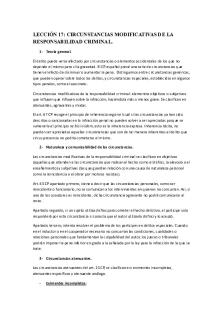The Crisis Deepens - Lecture notes 17 PDF

| Title | The Crisis Deepens - Lecture notes 17 |
|---|---|
| Author | Justin Martin |
| Course | Survey of American History |
| Institution | Oklahoma State University |
| Pages | 2 |
| File Size | 33.2 KB |
| File Type | |
| Total Downloads | 20 |
| Total Views | 120 |
Summary
Dr.Karibo Lecture...
Description
The Crisis Deepens Towards the Brink -Lincoln and the Republican Party (1854) -Lincoln-Douglas Debates (1858) -Dred and Harriet Scott: Supreme Court ruling -No slave or descendant of a slave could be a U.S. citizen, or ever had been a U.S. citizen -1859: John Brown’s Raid on Harper’s Ferry -1860 election: 4 way race -Shocked by 1860 election: Lincoln: 40% popular vote Lincoln originally aligned with the Whig party. Republican Party basically arose as an antislavery party. Lincoln was very progressive in his views towards slavery at the time. Dred Scott case dealt with the fact that the Scott family was moved into free territory then back into slave territory, which was some bullshit. Lincoln-Douglas Debates, huge debates viewed by many people, many arguments dealt with slavery. “House divided”. Harper’s ferry was a raid on an armory with intentions to seize arms and start a slave uprising. Very quickly shut down by militia and John Brown was put to death, many considered him a martyr for the cause. Many southern states pledged to secede from the Union if Lincoln was elected, thought Lincoln would totally disrupt southern way of life. South Leaves the Union -December 20, 1860: state convention in S.C. -Followed: MS; FL; AL; GA; LA; TX. -North weighs options -February 1861: Confederate States of America -Jefferson Davis (MS) and Alexander Stephens (GA). -Strategy: secession was normal and responsible Not all southern states initially left the union. Lincoln considered compromise but would not budge on the issue of slavery. Many people believed that they should just let the south be bu many opposed including Lincoln. Armed conflict against the south was what was decided on Davis- president of confederacy; Stephens- Vice President. Confederates believed that seceding was very American and that it was the right way to go since it struck against tyranny for some reason. Lincoln was quiet at first and didn’t say what he planned to do. South tried to make assassination attempts on Lincoln. Confederates nearly copied U.S. constitution but with additions of emphasis of state rights and they basically made it impossible for slavery to ever be abolished. Communities Mobilize for War -Fort Sumter: April 12, 1861 -Confederate Congress: volunteer army -North: federal army -The Border States: Stay or Go? -4 states remained: damaging the south -First Battle of Bull Run: July 21, 1861 US troops were trying to peacefully resupply Sumter and Davis ordered SC gov to attack US when they arrived. Lincoln transformed state militias into federal army. Armed conflict broke out in the border states. Richmond chosen as Confederate capitol, only 100 miles from DC.
Bull run was thought for both sides to be a quick battle that they would win easily. Ended up becoming complete chaos while people came to watch the battle. More than 620,000 soldiers died (1/4) deadliest conflict in US history. Strengths and Weaknesses of North and South -North -2.5x’s the South’s population -Industrial capacity -71% of nation’s railroad mileage -South -Defensive war -Military experience -Cotton economy 97% of firearms produced in America prior to the war came from the north....
Similar Free PDFs

LecciÓn 17 - Lecture notes 17
- 6 Pages

Chapter 17 - Lecture notes 17
- 15 Pages

Chapter 17 - Lecture notes 17
- 7 Pages

LEC17 - Lecture notes 17
- 28 Pages

CH17 - Lecture notes 17
- 17 Pages

L18 - Lecture notes 17
- 2 Pages

Tulips - Lecture notes 17
- 3 Pages

17ATOC - Lecture notes 17
- 4 Pages

Persuasion - Lecture notes 17
- 2 Pages

Lecture Notes 17
- 2 Pages

lecture 17 notes
- 4 Pages

MFS - Lecture notes 17
- 4 Pages
Popular Institutions
- Tinajero National High School - Annex
- Politeknik Caltex Riau
- Yokohama City University
- SGT University
- University of Al-Qadisiyah
- Divine Word College of Vigan
- Techniek College Rotterdam
- Universidade de Santiago
- Universiti Teknologi MARA Cawangan Johor Kampus Pasir Gudang
- Poltekkes Kemenkes Yogyakarta
- Baguio City National High School
- Colegio san marcos
- preparatoria uno
- Centro de Bachillerato Tecnológico Industrial y de Servicios No. 107
- Dalian Maritime University
- Quang Trung Secondary School
- Colegio Tecnológico en Informática
- Corporación Regional de Educación Superior
- Grupo CEDVA
- Dar Al Uloom University
- Centro de Estudios Preuniversitarios de la Universidad Nacional de Ingeniería
- 上智大学
- Aakash International School, Nuna Majara
- San Felipe Neri Catholic School
- Kang Chiao International School - New Taipei City
- Misamis Occidental National High School
- Institución Educativa Escuela Normal Juan Ladrilleros
- Kolehiyo ng Pantukan
- Batanes State College
- Instituto Continental
- Sekolah Menengah Kejuruan Kesehatan Kaltara (Tarakan)
- Colegio de La Inmaculada Concepcion - Cebu



